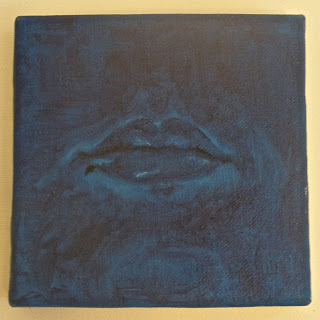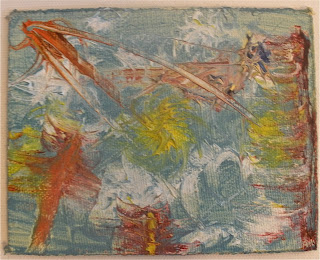Letting go of any sort of control in my artwork is always a difficult task. But it is also an important lesson.
This quote by Picasso has resonated with me ever since my visit to the Picasso Museum in Barcelona 4 years ago. I never really understood the importance of it until my studies in art education. My current philosophy (which has potential to change) is focused on creativity, self-exploration, self-awareness, and freedom to express. Like I've said in previous posts, the importance of art education is not the final product, but rather the means to this end and the emotional experience had while creating.
I think kids have the right idea: scribble and paint and throw anything down on paper or canvas that expresses what I'm feeling inside and how I'm seeing the world. As a 24 year old, I am by no means an adult, but I probably see the world A LOT differently than most 4 year olds. But why would it be wrong for a 24 year old to create an image of the world as if a 4 year old would see it? And why is it so hard to paint like a 4 year old when you're 24?! The harshest critic we have is ourselves and therefore we can't enjoy the beauty of purple trees or red skies or scribbles representing a house. But what about Picasso? Or the Fauvist artists whose works actually do look like a child could have possibly created it? These works present the hardest challenge to artists: Paint like a child and don't copy images exactly as the rest of the world may see it. Paint things the way YOU see them and the way YOU think they should be expressed.
I've taken great interest in Viktor Lowenfeld's work Creative and Mental Growth (pictured) lately and it's as if he has taken my thoughts and put them on paper. Lowenfeld emphasizes creativity, self-expression, importance of the individual during the creative process, and the overall benefits of these ideas for children. I could quote his entire book to express my own feelings about art but I'll spare you the 346 page post. However, here is a taste of what he has to offer:
"Probably the best preparation for creating is the act of creation itself." -p. 4
"Giving the child opportunities to create constantly with the knowledge he currently has is the best preparation for future creative action." -p. 4
"Art for the child is something quite different [from adults]. For a child art is primarily a means of expression...A child sees the world differently from the way he represents it, and as he grows his expression changes. " -p. 6
"Art education has the special mission of developing within the individual those creative sensitivities that make life satisfying and meaningful." -p. 13
I could go on and on but one of the most important lessons I take from this book is the importance of fostering the creativity in a child and allowing that self-expression to be made into beautiful works of art without judgement. This allowance at a young age to have an outlet for emotion and feeling will open up the possibilities for the future in school and in life in general.
The most important aspect of Lowenfeld's works are his "Developmental Stages in Art". Simply listed:
1. Scribbling Stage: 2-4 years old (approx.); random marks on paper
2. Preschematic Stage: 4-7 years old (approx.); first attempts at representational figures (head-feet figure for a man)
3. Schematic Stage: 7-9 years old (approx.); definite form; symbolizing parts of his environment
4. Stage of Dawning Realism: 9-12 years old (approx.); objects as symbols still; more self-awareness and detail
5. Pseudo-naturalistic Stage: 12-14 years old (approx.): recognize and create depth and proportion; self-criticism; for some, this is the end of artistic development
6. Age 14+: conscious awareness of art and eagerness to develop talent
Viktor Lowenfeld's Creative and Mental Growth*
While working with children and watching their work and actually looking beyond the scribbles and random colors, these stages make perfect sense. It has been so eye-opening to see art at these stages from an "adult" perspective. Children are most likely unaware of the transition between stages and do not understand the importance of going through each stage.
With all that being said I've decided to take on a mini-experiment. I am going to try creating works as if I were in each stage; starting from the beginning and moving through to where I actually am today. I want to learn to paint like a child. I want to know the excitement of color and scribbles and line and seeing the world with different eyes that make trees purple and skies red. I'm hoping to sense the emotion, self-awareness, and creativity that is supposedly to be experienced in each stage and understand the transitions between each stage. I'm trying to think of it as creativity experiment. Maybe if I start from the beginning and scribble and scribble until I can't scribble anymore, my mind will slowly begin to open and find that inner creativity and self-expression that I seem to have lost some years ago. We'll see how it goes...
The first of the Scribbles
A freeing experience.
*Lowenfeld, V & W.L. Brittain. (1970). Creative and Mental Growth. London, England: The Macmillian Company










